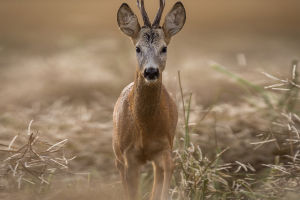Are you fascinated by owls? The Brown Wood Owl (Strix leptogrammica) is one of the most intriguing species found across South Asia.
From the forests of India to parts of southern China, this owl captivates with its distinct features and nocturnal lifestyle. Let's dive into its characteristics, behavior, and where you can spot it in the wild!
Tawny owl calling to his mate💖
video by The Wildlife Photographer
Physical Characteristics
The Brown Wood Owl is a medium-sized bird, measuring around 45-57 centimeters. Its upper body is dark brown, with white spots on its shoulders. Its underbelly is pale yellow with brown markings. The face has a reddish-brown hue with a white border, and it lacks concentric facial markings found in some other owls. The eyes are deep brown, and the owl's neck has a white band.
Males and females look alike, making them hard to distinguish.
Habitat and Distribution
This owl prefers dense, mountainous forests. It can be found in regions like India, Bangladesh, Sri Lanka, and parts of southern China and Taiwan. Brown Wood Owls nest in tree hollows, especially in oak trees, offering them a safe and quiet environment for raising young. These owls thrive in these secluded, quiet spaces away from the hustle and bustle of human settlements.
Diet and Hunting
As nocturnal hunters, Brown Wood Owls feed on small mammals, such as rodents, and insects. Their hunting style is silent, allowing them to approach prey undetected. Their sharp talons and excellent night vision make them efficient predators, perfect for surviving in the dark forest environments where they live.
Behavior and Nesting
Brown Wood Owls are solitary creatures and tend to be most active during the night. They rest in tree hollows during the day, blending with their surroundings. During breeding, both the male and female share duties incubating the eggs and raising the chicks. After hatching, the parents continue to provide care until the young owls are capable of flying.
Conservation Status
Thankfully, the Brown Wood Owl is not at risk. It is currently classified as a species of "Least Concern" by the IUCN, meaning its population remains stable. However, deforestation poses a threat to its habitat, so protecting these natural forests is essential for the owl's survival.
Where to Spot the Brown Wood Owl
For those interested in observing this majestic bird, the best places to look are in the dense forests of South Asia. Regions like India, Sri Lanka, and southern China offer opportunities to spot the Brown Wood Owl in its natural habitat. Early mornings and late evenings are the best times to see this nocturnal bird in action.
Final Thoughts
The Brown Wood Owl is a captivating bird, offering a glimpse into the fascinating world of nocturnal wildlife. Whether you are a birdwatcher or simply a lover of nature, this owl is sure to leave a lasting impression. Keep your eyes peeled—next time you're in a forested area, you might just encounter this elusive creature!
Thanks for reading, Lykkers! Have you ever spotted a Brown Wood Owl in the wild? Share your experiences with us!


